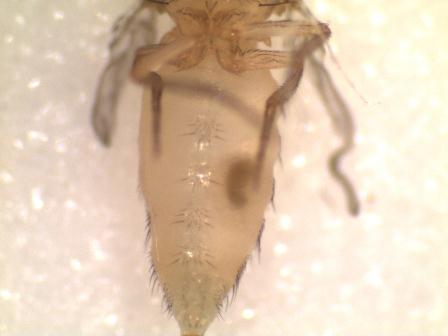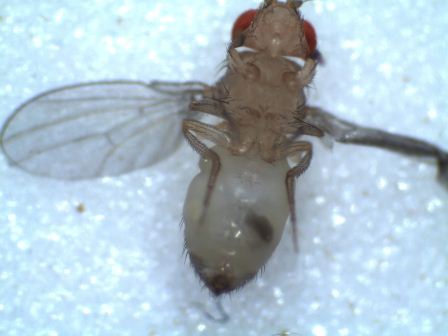Drosophila Rambling
Another means of collecting female virgin fruit flies
I don’t know about you, but I have been interested in genetics ever since I understood the implications of Alfred Sturtevant’s all nighter when he discovered that the analysis of offspring phenotypes from particular controlled crosses could give one information on the relative location of genes a chromosome.
With that said, I have always hoped to replicate those crosses in class, without the luxury of ordering the different generations from Carolina Biological, etc… Over the years, I have been frustrated from this realization by three problems which were1) anesthetizing flies, 2) collecting virgin female flies, and 3) having the time to conduct such a series of observations.
The second of these problems was generally the greatest challenge. I am aware that there are heat shock strains that I could get from our Olathe colleagues among others (thanks!), and that it was customary to clear vials and use timing since eclosion to collect for this purpose. But this year I only see my students once every 24 hours, so the later method wouldn’t work, and I hadn’t talked to Jeff Whitters about getting a new culture of heat shock flies either. So, it was off to google where I ran into a reference to a third method for collecting the females needed.
http://biology.arizona.edu/sciconn/lessons2/Geiger/intro2.htm
Here is the specific information that I had never known:
Being able to recognize virgin females removes the necessity of emptying culture vials on a timely basis and allows students to collect their own without the necessity of coming to class at odd times of the day. Note that virgin females are much larger than older females and do not have the dark coloration of mature females. In addition, in the early hours after eclosure, there will be visible a dark greenish spot (the meconium, the remains of their last meal before pupating) on the underside of the abdomen.
I thought, “Could this be true?”. After having this method confirmed by Dr. Susan Abmyer at the Stowers institute, I had my students looking for meconium spots on the ventral abdomen of flies. I haven’t found any images on the web, so here are a few examples of what we found:
So, for those that don’t have access to heat shock flies, and don’t have time to clear vials two times a day, I hope this method proves helpful to you. I’ll let you know how our crosses come out.


